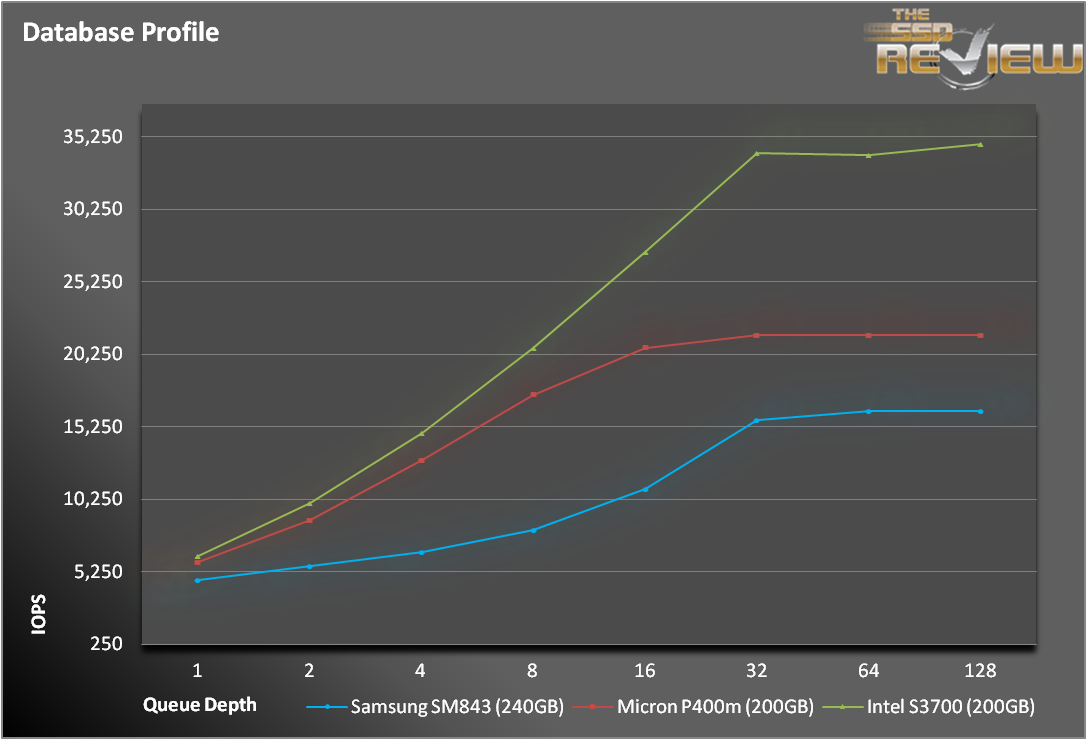SERVER PROFILES
While synthetic workloads do a great job of testing the underlying technology and reporting easy to understand results, they aren’t always indicative of how the drive will be used by the end user. Workloads that simulate enterprise environments try to bridge that gap without being overly complex.
The database profile is 8K transfers, and 67% percent of operations are reads.
Even though the database profile is heavily skewed towards read operations, the mix of write operations were enough slow down the SM843. The P400m was 30% faster at high queue depths while the S3700 was nearly double that of the SM843.
The fileserver profile is based on an 80% read/20% write mix. Its made up of blocksizes from 512 to 64K, each making up a different percentage of the access pattern.
The pattern is: 512 bytes=10%, 1k=5%,2k=5%, 4k=60%, 8k=2%, 16k=4%, 32k=4%, 64k=10%.
The fileserver profile gives a similar result. Both the P400m and the S3700 performed roughly 35% faster than the SM843.
The webserver profile is similar to the fileserver profile, but has some additional 128K and 512K accesses thrown in for good measure. Additionally, the profile is 100% read.
Well, that’s more like it. When we switch to our webserver profile, which is 100% reads, the SM843 pulls ahead of the pack. I guess we shouldn’t be completely surprised, one of the target applications that Samsung specifically called out was webserver.
Once again, we see that when the SM843 is tasked with primarily read operations, it delivers world class performance. But, when any non-trivial amounts of writes are introduced, it is easily outpaced by other drives.
 The SSD Review The Worlds Dedicated SSD Education and Review Resource |
The SSD Review The Worlds Dedicated SSD Education and Review Resource | 

